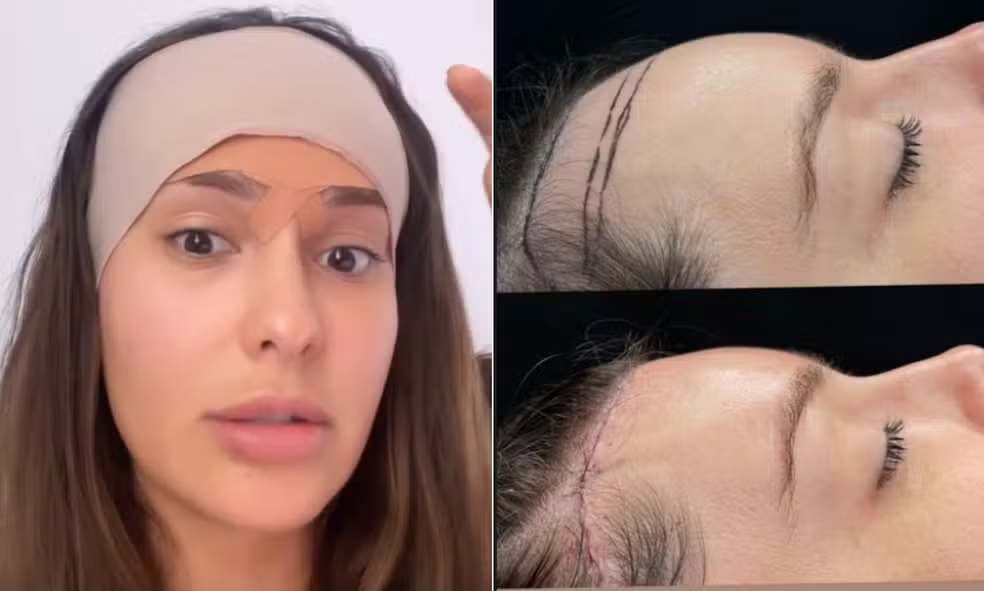The Importance of Dermatologic Ultrasound in Hyaluronic Acid Removal
Removing hyaluronic acid fillers is a procedure that requires precision, care, and detailed anatomical knowledge. While many patients believe that simply applying the enzyme hyaluronidase is enough to dissolve the product, clinical experience shows that this is not always the case. This is where dermatologic ultrasound becomes an essential tool for a safe, efficient, and personalized procedure.
Why Ultrasound is Not Just an Extra
Many people think ultrasound is simply an optional complement during hyaluronic acid removal. In reality, it is crucial. Ultrasound allows the clinician to precisely see where the filler is located, its depth, volume, and shape, ensuring that hyaluronidase is applied effectively.
This is particularly important in complex areas such as around the eyes. The anatomy of this region includes multiple layers: skin, fat, muscle, and bone. Hyaluronic acid can be distributed across these layers, like layers in a cake. If hyaluronidase is applied only on the surface, it may not reach the filler in the deeper layers, leaving residual product behind.
The Challenge of Encapsulated Hyaluronic Acid
In some cases, hyaluronic acid can become encapsulated, forming small “pockets” or dense nodules. Even when hyaluronidase is applied around these areas, the filler may remain intact.
In such situations, it is necessary to inject the enzyme directly into the pocket, penetrating the filler and ensuring complete dissolution. Without this precision, the results can be unsatisfactory, potentially requiring multiple unnecessary sessions.
Avoiding Excess Hyaluronidase
A common question patients ask is: “Why not just use a large amount of hyaluronidase to dissolve all the filler?”
The answer is that hyaluronidase, while effective, can also degrade the skin’s natural hyaluronic acid. Therefore, using only the necessary amount is safer and more efficient. Ultrasound allows clinicians to locate the exact position of the filler, enabling the minimal required dose of hyaluronidase to dissolve residual product while preserving the integrity of the skin and surrounding tissue.
Benefits of Ultrasound in Filler Removal
Using dermatologic ultrasound offers several significant advantages in hyaluronic acid removal:
- Maximum precision: clearly identifies the location and depth of the filler.
- Efficient hyaluronidase application: ensures the enzyme is delivered directly into pockets or nodules.
- Reduced sessions: allows for complete resolution in fewer procedures.
- Patient safety: minimizes the risk of degrading natural hyaluronic acid in the skin.
- Product efficiency: only the necessary amount of hyaluronidase is used, reducing potential side effects.
Clinical Experience
In clinical practice, many patients receive hyaluronidase without ultrasound and still have residual hyaluronic acid. By performing an ultrasound, we can precisely locate the remaining pockets and apply the enzyme accurately, achieving complete dissolution.
This demonstrates that filler removal is not just about the amount of enzyme or manual skill but also about strategy and precision guided by imaging.
Conclusion
Dermatologic ultrasound is an indispensable tool for removing hyaluronic acid, especially in delicate areas such as the eyes. It allows the procedure to be safe, efficient, and personalized, ensuring that the filler is completely dissolved without wasting hyaluronidase and without compromising the skin’s natural hyaluronic acid.
Therefore, when considering facial filler removal, it is essential to choose clinics and professionals who use ultrasound for evaluation. This approach ensures precision, predictable results, and patient safety, providing an effective and satisfactory procedure.






